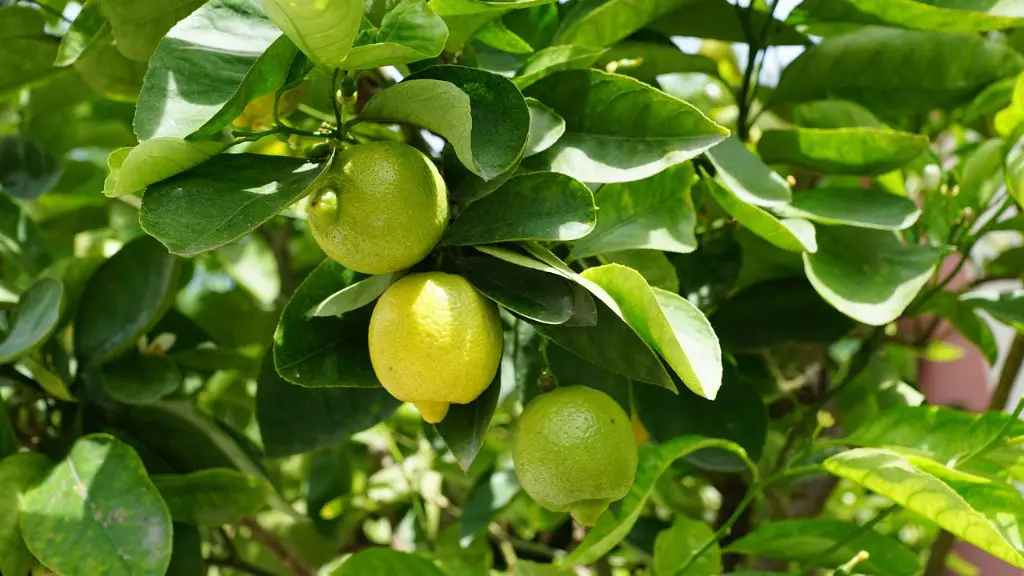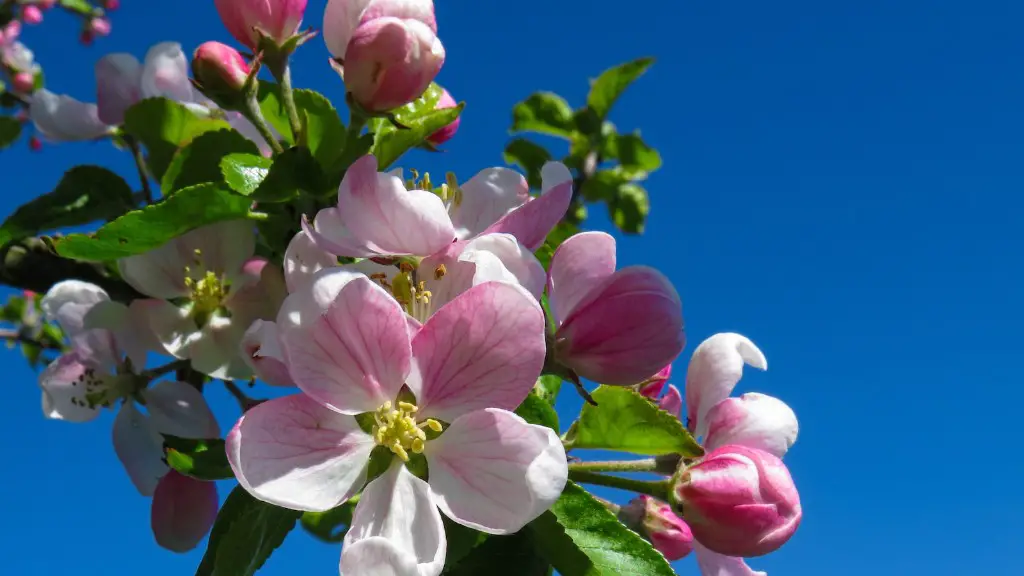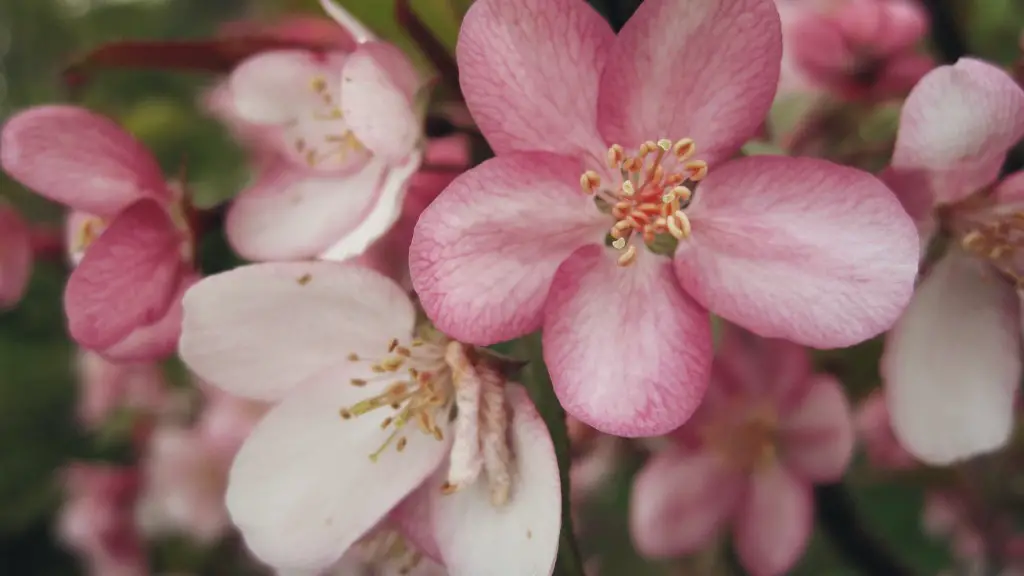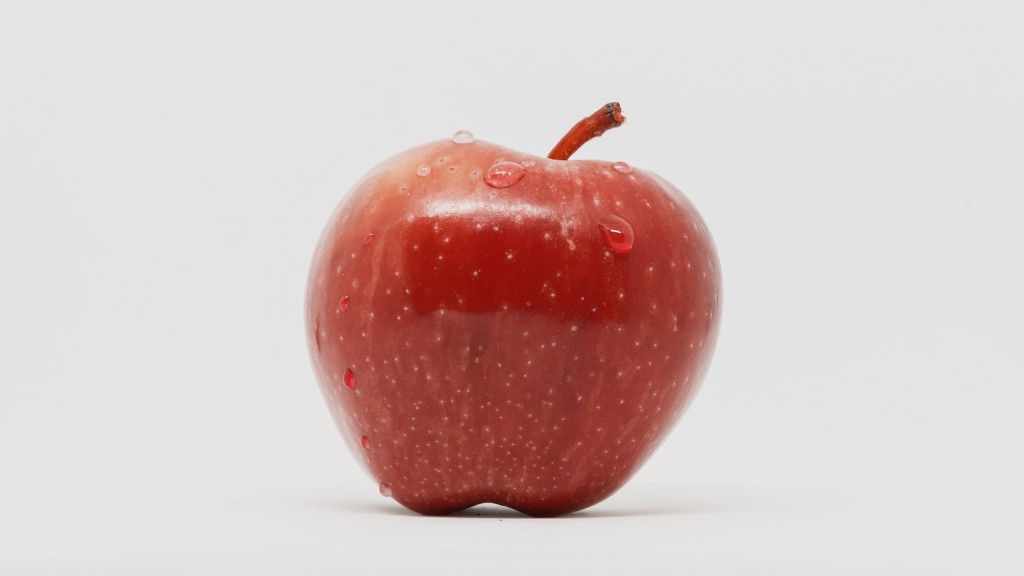Potting a lemon tree indoors is something that anyone can do. It’s a fun project that only takes a few steps to complete. To begin, purchase an appropriate container for the potting mix, such as a terracotta pot. Make sure the pot is big enough to accommodate the tree’s root system without crowding it. Next, fill the pot with a good potting mix. A soil-less, lightweight mixture containing nutrient-rich organic material is best. When filling the pot, fill it just up to the top of the root-ball of the lemon tree. This will ensure that the lemon tree has plenty of room to develop its roots.
After the pot is filled, the lemon tree can be placed in the pot. Place the tree in the pot so that the top of the root-ball is even with the top of the pot. Push the potting mix around the root-ball to fill in any holes or spaces. Then water the tree thoroughly until it drains out of the bottom of the pot.
When the water has drained out of the pot, it’s time to add mulch. Mulch helps retain moisture in the pot and prevents weeds from growing. Spread a thin layer of organic mulch, such as shredded bark, around the base of the tree. This will help keep the soil moist and protect the roots from extreme temperatures.
Now you are ready to care for the tree. Place the tree in an area with indirect sunlight, such as a windowsill. Lemon trees prefer temperatures between 60°F and 70°F, so ensure the room temperature is stable. Water the tree every 7-10 days, or when the top inch of soil feels dry. Avoid over-watering, as this can cause root rot.
Fertilizing the lemon tree is also important. Lemon trees need a good balance of nitrogen, potassium, and phosphorous to thrive. Use an organic fertilizer, such as an all-purpose vegetable formula, and apply it lightly to the soil twice a month. Follow the directions on the package for best results.
By following these steps, you can easily pot a lemon tree indoors and enjoy its sweet fruits. With the proper care, your lemon tree can provide you with a tasty harvest for many years.
Growing Lemon Trees
Growing lemon trees indoors can be a rewarding hobby that provides an abundance of fragrant flowers, lush foliage, and juice lemons. Otherwise known as Citrus limon, lemon trees are a member of the Rutaceae family and can be grown in pots, indoors or outdoors. However, lemon trees prefer warmer climates, so they’re typically grown indoors in cooler climates. Lemon trees also require a lot of sunlight, so they’re best placed in sunny areas.
When grown indoors, lemon trees should be placed in a bright window with at least 6 to 8 hours of direct sunlight. If there isn’t enough sunlight, you can use a grow light to supplement the sunshine. Make sure to rotate the pot regularly to ensure even lighting.
Lemon trees need regular watering but avoid over-watering, as this can lead to root rot. The soil should be moist but not soggy. Check the soil once a week and water when the top inch feels dry. Too little water can cause the tree to become stressed and the leaves may start to turn yellow.
Fertilizing is an important part of caring for a lemon tree. Use a liquid fertilizer with a balanced NPK ratio, such as an all-purpose vegetable formula, and apply it to the soil twice a month. Follow the directions on the package for best results.
Finally, prune the lemon tree to promote growth and remove dead or damaged branches. When pruning, use sharp, clean cutting tools and make clean, angled cuts to avoid damaging the tree. Prune the tree once a year in the early spring before new growth begins.
The Benefits Of Lemon Trees
Having a lemon tree isn’t just about growing some juicy lemons. It’s about adding beauty and character to your home. Not only are lemon trees lush and vibrant, but they also purify the air and provide a refreshing citrus scent.
In addition to being aesthetically pleasing, lemon trees have some amazing benefits. Lemons are rich in vitamin C, so they’re great for boosting your immune system and fighting off colds. Lemons also contain polyphenols, which act as antioxidants and can help reduce inflammation. Plus, the juice is a wonderful natural seasoning, perfect for adding a citrus twist to any dish.
Finally, lemon trees are surprisingly low-maintenance. Once planted, they typically require minimal care, such as fertilizing, pruning and occasional repotting. And you don’t need to worry about pests or diseases, as long as the tree is properly cared for.
The Common Problems Of Indoor Lemon Trees
Although lemon trees are fairly low-maintenance, there are a few common problems that can arise. The most common issue is browning or yellowing leaves. This is usually a sign of low humidity, which indoor lemon trees need in order to thrive. Increase the humidity by placing the pot on a tray filled with wet pebbles.
Leaves can also turn yellow if the tree is getting too much direct sunlight. If the tree gets too much sun, the foliage may begin to scorch, turn yellow, and fall off. To prevent this, keep the tree in a bright but shaded area, away from direct sunlight.
Incorrect watering can also lead to yellow leaves. Too little water can cause drought stress, while too much water can cause root rot. Check the soil once a week and water only when the top inch feels dry.
Finally, too much fertilizer can also cause yellow leaves. If you notice yellow or brown leaves, reduce the amount of fertilizer you’re using or try a different type. Make sure to follow the directions on the package for best results.
Tips For Maintaining Lemon Trees
When it comes to caring for a lemon tree, there are a few important things to keep in mind. The most important tip is to keep the soil consistently moist but not soggy. Lemon trees love humidity, so check the soil once a week and water when the top inch feels dry.
Regular fertilizing is also important. Lemon trees need a balanced supply of nitrogen, potassium, and phosphorous to thrive. Use a liquid fertilizer with a balanced NPK ratio, such as an all-purpose vegetable formula, and apply it to the soil twice a month. Follow the directions on the package for best results.
Finally, don’t forget to prune the tree. Prune the tree once a year in the early spring before new growth begins. When pruning, use sharp, clean cutting tools and make clean, angled cuts to avoid damaging the tree.
Harvesting Lemons From Lemon Trees
Once your lemon tree is established, you’ll be able to enjoy the fruits of your labor. Lemon harvesting usually starts in winter when the fruits are well-ripened. Depending on the variety, lemons can take anywhere from 8-15 months to ripen.
When harvesting lemons, be sure to use clean cutting tools for safety and sanitation. Gently twist the lemons off the tree, leaving the stem attached. Lemon fruits can also be harvested by hand, but using cutting tools is recommended to avoid any damage to the tree.
If your lemon tree is too tall to reach, use a ladder to safely access the fruits. When using ladders, always wear slip-resistant footwear and keep three points of contact on the ladder at all times.
Preserving Lemons For Later Use
Lemons can be used for a variety of purposes, from adding flavor to dishes to making homemade cleaners and beauty products. If you have an abundance of lemons, you can preserve them for later use. The easiest way to do this is by freezing them.
To freeze lemons, remove the zest and juice and store them in airtight containers. You can also freeze the whole lemon, with the skin on. However, the skin may become discolored and puckered during the freezing process.
Lemons can also be pickled or preserved in sugar syrup. Use a basic brine made with salt and vinegar to pickle the lemons and add a delightful flavor to dishes. Or, make a simple syrup by combining sugar and water, and then add the lemons to the syrup for an extra sweet twist.
Troubleshooting Lemon Tree Problems
As with any other type of plant, lemon trees can sometimes experience issues. If you’re having trouble with your lemon tree, the first step is to identify the problem. Common lemon tree issues include browning or yellowing leaves, poor fruit production, and stunted growth.
To fix brown or yellow leaves, increase the humidity and make sure the tree is getting enough but not too much water. Poor fruit production can be caused by too much nitrogen, so reduce the amount of fertilizer and repot the tree in fresh soil. Stunted growth is usually due to inadequate sunlight or incorrect watering, so make sure the tree is getting enough light and is not overwatered.
If the problem persists, consider repotting the tree in a larger pot with fresh soil and more room for the roots. You may also need to top-dress the soil with a slow-release fertilizer to give the tree a nutrient boost. Adding some compost to the soil is also beneficial.




